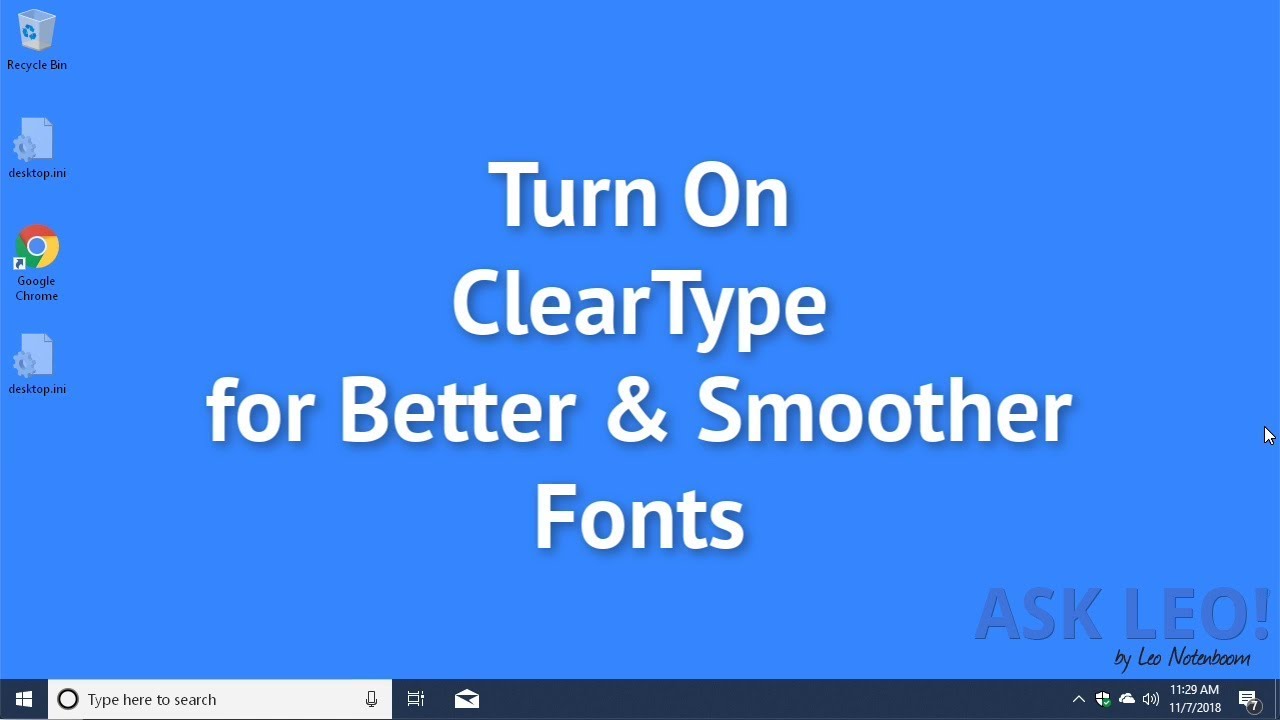Mastering Clarity: A Comprehensive Guide on Adjusting ClearType for Optimal Font Rendering on Windows 10

Introduction:
In the ever-evolving digital landscape, visual aesthetics play a crucial role in user experience, and font rendering is at the forefront of this experience. Windows 10, Microsoft’s latest operating system, comes equipped with ClearType, a technology designed to enhance the clarity and readability of on-screen fonts. This comprehensive guide will delve into the intricacies of ClearType and provide step-by-step instructions on how to adjust it to achieve optimal font rendering on Windows 10.
Understanding ClearType:
ClearType is a font smoothing technology developed by Microsoft to enhance the readability of text on LCD screens. It works by addressing the natural misalignment of RGB pixels on LCD displays, optimizing font rendering for improved clarity. By adjusting the way individual pixels are displayed, ClearType reduces jagged edges and enhances the overall smoothness of text, providing a more visually pleasing reading experience.
Why Adjust ClearType?
While Windows 10 comes with ClearType enabled by default, fine-tuning its settings allows users to tailor the font rendering experience to their preferences and specific display characteristics. Factors such as display type, resolution, and personal visual preferences can influence the perceived clarity of on-screen text. Adjusting ClearType ensures that fonts are rendered optimally, resulting in a visually satisfying and comfortable reading experience.
Step-by-Step Guide to Adjusting ClearType:
Step 1: Access ClearType Settings
- Open the Start Menu: Click on the Windows icon in the bottom-left corner of your screen or press the Windows key on your keyboard.
- Type “ClearType” in the Search Bar: Begin typing “ClearType” in the search bar. As you type, the “Adjust ClearType text” option will appear in the results.
- Select “Adjust ClearType text”: Click on the “Adjust ClearType text” option to open the ClearType Text Tuner.
Step 2: ClearType Text Tuner
- Ensure Your Monitor is at Its Native Resolution: For the most accurate results, make sure your monitor is set to its native resolution. You can adjust this in the display settings of Windows 10.
- Check “Turn on ClearType”: Ensure that the “Turn on ClearType” option is checked. This activates ClearType and allows you to fine-tune its settings.
- Proceed with the ClearType Wizard: The ClearType Text Tuner will guide you through a series of text samples. Select the text samples that appear clearer and more readable to you. This process helps ClearType tailor its settings to your visual preferences.
- Complete the Wizard: Follow the on-screen instructions until you complete the ClearType Text Tuner wizard. Once finished, your ClearType settings will be applied.
Step 3: Additional ClearType Settings
- Access ClearType Settings Through Control Panel: If you want to explore additional ClearType settings, you can access them through the Control Panel. Right-click on the desktop, select “Display settings,” and then click on “Advanced display settings.” From there, choose “ClearType text” and follow the on-screen instructions.
- Adjust for Consistency Across Multiple Monitors: If you use multiple monitors with different characteristics, the ClearType wizard may allow you to adjust settings for each monitor individually. This ensures a consistent font rendering experience across all displays.
Tips for Fine-Tuning ClearType:
- Consider Ambient Lighting: The lighting conditions in your workspace can affect how fonts appear on-screen. Adjust ClearType settings based on the ambient lighting to optimize text readability.
- Experiment with Contrast and Brightness: Changes in contrast and brightness settings can impact font rendering. Experiment with these settings and adjust ClearType accordingly for optimal results.
- Revisit ClearType Settings Periodically: As your display or preferences may change over time, revisit the ClearType settings periodically to ensure that fonts continue to render optimally.
Conclusion:
Mastering ClearType on Windows 10 is a powerful way to enhance the clarity and readability of on-screen fonts, providing users with a more enjoyable and visually pleasing computing experience. By following the step-by-step guide and considering additional tips for fine-tuning, users can tailor ClearType settings to match their preferences and display characteristics. The result is an optimized font rendering experience that contributes to improved readability and overall satisfaction with the visual elements of the Windows 10 interface. Whether you’re a professional, a student, or a casual user, investing time in adjusting ClearType is a worthwhile endeavor for anyone seeking a clearer and more visually appealing display of on-screen text.




